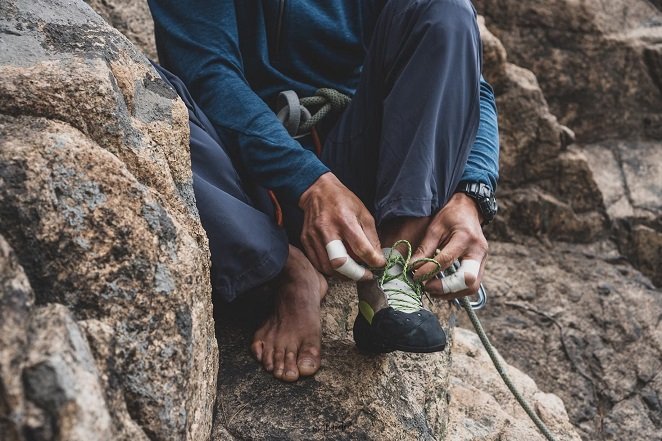Rock climbing is an exhilarating sport that offers a unique blend of physical challenge, mental focus, and outdoor adventure. However, like any outdoor activity, rock climbing comes with inherent risks, and it’s essential to take precautions to minimize these risks and avoid accidents. In this article, we’ll discuss some rock climbing tips focused on climbing gear that can help you stay safe and enjoy your climbing experience to the fullest.
Choose the Right Climbing Shoes
One of the most crucial pieces of gear for any rock climber is a pair of climbing shoes. The right pair of climbing shoes can make a significant difference in your performance and safety on the rock. When selecting climbing shoes, look for a snug fit with a comfortable yet secure feel. The shoes should provide enough sensitivity and precision for precise foot placements while offering adequate support and protection. Additionally, consider the type of climbing you’ll be doing and choose shoes with appropriate features such as sticky rubber soles for better grip and downturned shapes for technical climbs.
Inspect Your Harness Regularly
Your climbing harness is another essential piece of gear that plays a critical role in your safety while climbing. Before each climb, take the time to inspect your harness thoroughly for any signs of wear, damage, or defects. Check the stitching, webbing, and buckles for any fraying, abrasion, or weakness. If you notice any issues, replace the harness immediately to avoid compromising your safety. Additionally, make sure your harness fits snugly and comfortably, with all straps adjusted and secured properly.
Use Proper Anchors and Protection
Anchors and protection devices are essential for keeping you safe while climbing. Whether you’re setting up a top rope anchor or placing traditional gear on a lead climb, it’s crucial to use proper anchors and protection that are secure and reliable. Take the time to learn how to place and evaluate various types of protection, such as cams, nuts, and bolts, and practice building solid anchors in different rock types and conditions. Always double-check your placements and test them for stability before committing to them.
Inspect Your Rope Regularly
Your climbing rope is your lifeline on the rock, so it’s essential to keep it in good condition. Before each climb, inspect your rope carefully for any signs of wear, damage, or weakness. Look for fraying, cuts, abrasion, or soft spots that may indicate internal damage. Pay attention to the rope’s sheath and core, as well as any discoloration or stiffness that may affect its performance. If you notice any issues, retire the rope immediately and replace it with a new one to ensure your safety while climbing.
Wear a Helmet
Wearing a helmet is one of the simplest and most effective ways to minimize the risk of head injuries while climbing. Accidents can happen at any time, and falling rocks, dropped gear, or collisions with other climbers are all potential hazards. A helmet provides essential protection for your head in the event of a fall or impact, reducing the risk of serious injury. Make sure your helmet fits snugly and securely, with all straps adjusted properly, and wear it at all times while climbing, belaying, or rappelling.
Conclusion
Rock climbing is a thrilling and rewarding sport that offers a unique opportunity to challenge yourself and explore the great outdoors. However, it’s essential to take precautions to minimize risks and avoid accidents while climbing. By focusing on climbing gear and following these rock climbing tips, you can stay safe and enjoy your climbing experience to the fullest.
Get quality climbing gear from Snow+Rock today. With the right gear and precautions, you can climb with confidence and peace of mind, knowing that you’re taking steps to protect yourself and your climbing partners.
